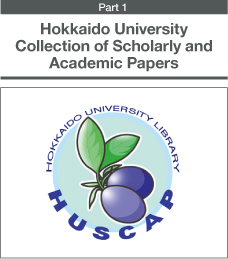
Shigeki Sugita
(Library Information System Section, Hokkaido University Library)

Here are a few sample comments from Hokkaido University researchers on receiving our monthly report on accesses to our institutional repository (IR) :
"I was surprised. I hadn’t expected so many accesses.”
“For someone doing research, it’s very encouraging to know how often one’s articles are accessed. When I finish another paper that I feel is substantial, I’ll be in touch.”
“We can see the trends among readers.”
“Thank you for letting us know the access figures. As a worldwide small population of researchers in this field, Japan is no exception, it was reassuring to learn that there are people interested in our work. We look forward to hearing from you again. We will also send you more manuscripts in future as we finish putting them in order.”
A graduate student sent this message: “Thanks to HUSCAP, I’m finding my research work very rewarding as people tell me ‘I’ve read your papers’ whenever I attend an academic society or workshop. I’m invited to meetings, and have even been asked to write a book.”
A professor whose lecture materials are available online commented: “I think posting my lecture notes on HUSCAP is very meaningful, because preparing lectures can come to seem like a bit of a chore, but seeing the number of downloads lends a sense that it’s worthwhile and motivates me to do a better job. Above all, I expect that knowing they will be made public nationwide will help me approach my lectures with a healthy tension—no cutting corners.”
We also hear from professors who find themselves under some restriction that prevents self-archiving due to the policies of journal publishers:
“As I understand it, once I sent the copyright transfer to the society, I no longer had any choice but to comply with their view of copyright.”
“The author’s rights are guaranteed because research results are public in nature, not because they are personal property. [On being asked about potential harm to journal sales and hence to the stable operation of the society that publishes the journal:] I think what’s missing here is the perspective that published research findings are public assets. Research done by national university corporations is taxpayer-funded through the government's (Kakenhi) and other grants, and I think we have a duty to publish the results via a public institution.”
“I can’t see that making papers accessible online will have much impact on journal sales. What matters to us is how many people read our papers, by whatever means, and the factor that matters most to journals is, I believe, how often their articles are cited by other articles. If a paper is read and cited, the value of the journal goes up, and that in turn leads to more good submissions. I don’t know whether it’s appropriate to grant ‘author’s rights’ to papers made accessible online, but I think there’s room for a little more tolerance about granting public access.”
Personal comments like these from the authors have encouraged us over the four years since we started soliciting content in July 2005. At the time of writing, HUSCAP held a total of 29,157 papers, and total downloads had reached 2,975,630.
When we reached our first milestone, our 10,000th paper, its two authors sent us these messages: “I want people in specialties other than my own (psychophysiology) to read my papers and give me their candid views,” and “People in the same field are more likely to read them via databases and journals.”
We on the management side are delighted that our institutional repository has become a crossroads in the steadily expanding and increasingly multilayered distribution of scholarly literature. |

